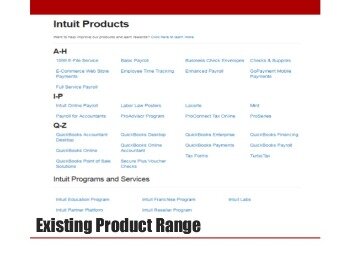Contents:


The sum of non-operating incomes and expenses is called a ‘non-operating item’. Being able to break the income statement up into segments provides more insight into what is going on with the company and is a core attribute of the multi-step income statement. The income statement for a merchandiser is expanded to include groupings and subheadings necessary to make it easier for investors to read and understand. We will look at the income statement only as the other statements have been discussed previously.
- It simply adds up all of the revenue a company brings in from its business activities, as well as any other gains, such as from investments or interest income.
- On the other hand, some investors may find single-step income statements to be too thin on information.
- An income statement, also called an earnings report or a profit-and-loss statement, shows a company’s fiscal operations during a specified time period.
- Users can gain insights into how a company’s primary business activities generate revenue and affect costs compared to the performance of the non-primary business activities.
- Examples of a non-operating income include gain from the sale of an asset, gain incurred in foreign exchange dealings, dividend income, and profit from investments.
Founded in 1993 by brothers Tom and David Gardner, The Motley Fool helps millions of people attain financial freedom through our website, podcasts, books, newspaper column, radio show, and premium investing services. Neil Kokemuller has been an active business, finance and education writer and content media website developer since 2007. Kokemuller has additional professional experience in marketing, retail and small business. He holds a Master of Business Administration from Iowa State University.
First, add your operating revenues, which is the sales revenue generated from selling your goods or services. Both selling and administrative expenses are added together for computing total operating expenses. And the Company’s Operating income is calculated by deducting these total operating expenses from the gross profit in the first section. Non-operating revenues and expenses are then added to or subtracted operating income in order to calculate income before taxes. Non-operating items are those revenues and expenses that do not pertain to the company’s normal operations such as dividend income, interest income and expense, and income tax expense. Operating income is the profit that results from normal business operations.
What Do They Include?
Unlike a single-step format, multi-step formats don’t only focus on net income but offer an additional level of detail by calculating two more income-related figures. The type of income statement you choose depends on the level of financial detail you are looking for, and the type of business you operate. Multiple-Step statements provide an in-depth look at a company’s financial health, offering details about the company’s wellbeing. Assists in better analyzing the financial performance and the general health of a company.
- Non-operating revenues and expenses are then added to or subtracted operating income in order to calculate income before taxes.
- Small businesses with a simple operating structure, including sole-proprietorships and partnerships, can choose between creating single-step or multi-step income statements.
- Our experts love this top pick, which features a 0% intro APR until 2024, an insane cash back rate of up to 5%, and all somehow for no annual fee.
- Expenditures like advertising, the salary of a salesman, freight, and commissions are included in selling expenses.
- This is particularly helpful for analyzing the performance of the business.
Calculating gross profit, operating income, non-operating income, and net income are important components of creating a multi-step income statement. Operating income, meaning operating revenues and expenses, are those income and cost items that result from normal business operations. Whereas, non-operating income and expenses are those items that don’t result from normal business operations, such as interest expenses or investment gains. A multiple-step income statement includes an itemized list of a company’s various sources of revenues and expenses.
Multi-Step Income Statement Formulas
The average collection period formula profit relates to the core activity of a business and shows how profitable is a company in manufacturing its product. Gross profit is a simple way of studying a business model for a company. Potential investors and creditors may ask for such statements to get a detailed insight into the gross profit and operating income. This includes revenues and expenses from non-operating activities, including interest and the sale or purchase of investments. Operating expenses for a merchandising company are those expenses, other than COGS, incurred in the normal business functions of a company.
The Plan Sponsor’s Guide to Retirement Income – Pensions & Investments
The Plan Sponsor’s Guide to Retirement Income.
Posted: Thu, 06 Apr 2023 04:13:27 GMT [source]
Comparing this to previous periods and industry standards helps you determine how well your business is generating profit on sales. An income statement, also called an earnings report or a profit-and-loss statement, shows a company’s fiscal operations during a specified time period. These income statements, typically produced quarterly or annually, display the company’s revenues, expenses and the difference between the two. Companies with specific business structures, such as corporations, must produce a multiple-step income statement, while other companies have the option of presenting a single-step income statement.
On the downside, these detailed statements are labor-intensive to produce and can be overwhelming for some investors to sort through. If you are launching a new business or your business is young, lenders will consider your personal credit score. Eventually, though, you’ll want to establish your business credit. Volatility profiles based on trailing-three-year calculations of the standard deviation of service investment returns.
Multi-step income statements, on the other hand, use multiple equations to calculate net income. In doing so, they also calculate gross profit and operating income, which aren’t included on a single-step income statement. In comparison, a single-step income statement gives a simple record of financial activity. On the other hand, some investors may find single-step income statements to be too thin on information.
Calculate Net Income
Add your revenues and expenses from non-operating activities, including interest and the sale or purchase of investments. The header of your multi-step income statement conveys important information to readers. It states the name of your company, it identifies the document as an income statement and it defines the reporting period covered by the document. Gross profit is the result of subtracting the cost of providing the company’s goods or services (i.e., cost of goods sold) from the revenues earned by selling these goods or services.
This total expense line is subtracted from the gross profit computed in the first section to arrive at the company’s operating income. The income statement, one of the four principal financial reports for businesses, shows the company’s net income or loss over a specified period of time. A multi-step income statement includes the subtotals that lead to the net income calculation and thus provides more detail into how your business generates net income than a single-step statement. This allows you as a business owner or manager to gain more insight into the business and its financial position. It’s no surprise that the main advantage of the multi-step format comes from the in-depth figures it provides.
Investors and financial analysts often use the data from multiple-step income statements to determine a company’s overall health, such as its gross margin and profit margin. The multi-step income statement details the gains or losses of a business, in a specific reporting period. It offers an in-depth analysis of a business’s financial performance. Its format separates a company’s operating revenue and operating expenses from its non-operating revenue and non-operating expenses. A multi-step income statement is an income statement that segregates total revenue and expenses into operating and non-operating heads.
Example of Single-step Income Statement
On the other hand, a multiple-step income statement offers a more in-depth look at a company’s performance. The purpose of an income statement is to provide users with information about a business’s profitability over a specific reporting period. However, there are two formats that can be used to prepare an income statement—the single step format and the multi step format—and many small business users wonder which format their businesses should be using. While both formats have advantages and disadvantages, your choice of format depends on what you intend to use your income statement for. The multi-step income statement offers several advantages to users. These include the higher level of detail and the multiple levels of income reported.
A Small Business Guide to the Income Statement – The Motley Fool
A Small Business Guide to the Income Statement.
Posted: Fri, 05 Aug 2022 07:00:00 GMT [source]
Horizontal analysis is used in financial statement analysis to compare historical data, such as ratios or line items, over a number of accounting periods. Advisory services provided by Carbon Collective Investment LLC (“Carbon Collective”), an SEC-registered investment adviser. Investors, creditors, and other stakeholders of interest monitor the gross margin to analyze how efficient a company’s operations are. If you need to borrow money to cover seasonal cash flow fluctuations, a business line of credit, rather than a term loan, provides the flexibility you likely need. Here’s an example of a single-step income statement from fictional company XYZ. Here’s an example of a multi-step income statement for fictional company ABC.
A single-step income statement offers a simple report of a business’s profit, using a single equation to calculate net income. A multi-step income statement, on the other hand, separates operational revenues and expenses from non-operational ones and follows a three-step process to calculate net income. Income statements, also called profit and loss statements, are one of the major financial statements prepared by businesses. Additionally, the multi-step income statement segregates operating and non-operating income.

Each level of income comes from subtracting each category of expense. Income levels include gross profit, operating income and net income. As discussed above, the multi-step income statement is like a single-step income statement, but the difference only lies in the representation part. In a multi-step income statement, the calculation is broken down into several parts to arrive at the net income figure at the bottom line. The gross profit is too separately calculated and shown in such an income statement. Here, operating expenses and operating revenues are separated from non-operating and non-operating revenues and separately in different steps.
The Three Main Business Activities Measured by Financial Statements
We Fools may not all hold the same opinions, but we all believe that considering a diverse range of insights makes us better investors. As a business owner, you have many options for paying yourself, but each comes with tax implications. The statements and opinions are the expression of the author, not LegalZoom, and have not been evaluated by LegalZoom for accuracy, completeness, or changes in the law.
The selling and administration expenses from operating activities are captured in the second section of a multi-step income statement. The selling expenses are the costs incurred when selling goods to consumers and may include marketing expenses, the salary of sales personnel, and freight charges. Many private companies elect to follow GAAP, even though they aren’t legally obligated to do so. In any case, GAAP gives companies the option of issuing either single-step or multiple-step income statements, depending on how they’re structured.

The gross margin computes the amount of money the company profits from the sales of its merchandise. This is simply the cash flow in from the sales of merchandise and the cash flow out from the purchase of that merchandise. This section not only helps measure the profitability of the core business activities, it also helps measure the health of the business. Simpler business structures, such as sole proprietorships and partnerships, have the option of using either the single-step or the multi-step format. An income statement is an essential financial document that reports a business’s profits, revenue, and expenses over a period of time.
Operating revenues and expenses are also known as indirect costs or generalized expenses that go toward a company’s general infrastructure. Examples of operating costs are salaries, marketing, research, legal fees, and rent. If you’re a sole proprietor or independent contractor, you can certainly get by using a single-step income statement.

However, because of the useful metrics they contain, most businesses – especially those with investors – choose to use multiple-step income statements. Another useful income figure calculated by the multi-step format is operating income. A business’s operating income is calculated by subtracting its operating expenses from its gross profit. The top section of your multi-step income statement covers your total operating activities.



